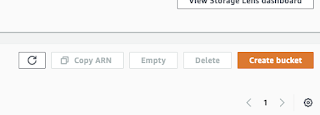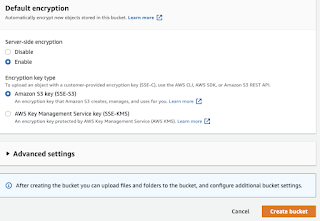How to setup SonarQube using Docker and Docker compose?
SonarQube is static code analyis tool. It can be installed quickly using Docker with less manual steps.
Pre-requistes:
- Ubuntu EC2 up and running with at least t2.small
- Port 9000 is opened in security firewall rule
- Make sure maximum number of
Add the following lines to the bottom of that file:
vm.max_map_count=262144
fs.file-max=65536
To make sure changes are getting into effect:
sudo sysctl -p
Install Docker
sudo apt-get install docker -y
Install Docker-Compose
sudo apt-get install docker-compose -y
What is Docker Compose?
Compose is a tool for defining and running multi-container Docker applications. With Compose, you use a YAML file to configure your application’s services. Then, with a single command, you create and start all the services from your configuration.
The purpose of docker-compose is to function as docker cli but to issue multiple commands much more quickly. To make use of docker-compose, you need to encode the commands you were running before into a docker-compose.yml file
Run docker-compose up and Compose starts and runs your entire app.
Create docker-compose.yml
this yml has all configuration for installing both SonarQube and Postgresql:
sudo vi docker-compose.yml
(Copy the below code high-lighted in yellow color)
version: "3"
services:
sonarqube:
image: sonarqube:lts-community
container_name: sonarqube
restart: unless-stopped
environment:
- SONARQUBE_JDBC_USERNAME=sonar
- SONARQUBE_JDBC_PASSWORD=password123
- SONARQUBE_JDBC_URL=jdbc:postgresql://db:5432/sonarqube
ports:
- "9000:9000"
- "9092:9092"
volumes:
- sonarqube_conf:/opt/sonarqube/conf
- sonarqube_data:/opt/sonarqube/data
- sonarqube_extensions:/opt/sonarqube/extensions
- sonarqube_bundled-plugins:/opt/sonarqube/lib/bundled-plugins
db:
image: postgres:12
container_name: db
restart: unless-stopped
environment:
- POSTGRES_USER=sonar
- POSTGRES_PASSWORD=password123
- POSTGRES_DB=sonarqube
volumes:
- sonarqube_db:/var/lib/postgresql10
- postgresql_data:/var/lib/postgresql10/data
volumes:
postgresql_data:
sonarqube_bundled-plugins:
sonarqube_conf:
sonarqube_data:
sonarqube_db:
sonarqube_extensions:
Save the file by entering :wq!
Now execute the compose file using Docker compose command:
sudo docker-compose up -d
If you are getting any errors like this, make sure you exit below commands to adding Docker group to current user.
sudo usermod -aG docker $USER
Make sure SonarQube is up and running
sudo docker-compose logs --follow
Once you see the message, that's it. SonarQube is been installed successfully. press control C and enter.
Now access sonarQube UI by going to browser and enter public dns name with port 9000














































